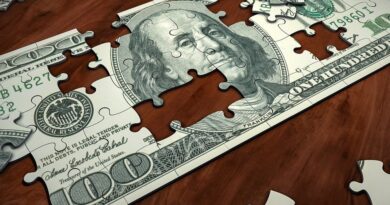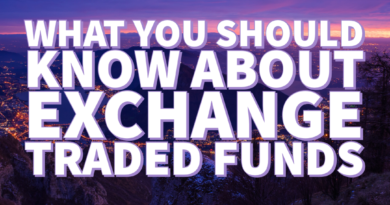It’s Like Cash Back, Only Better
Think about the places that you’ve spent money over the past several weeks. You probably purchased gas for your vehicle, maybe had a drink with your fast food order delivered by Uber Eats or paid a utility bill. A publically traded company distributes a share of the profit in those transactions to their shareholders. Exxon currently pays 7.42%, Coca-Cola’s yield is 3.36% and Dominion Energy pays out 3.43%.1
If you are a shareholder in these companies, you get your share of the distributions. It’s like getting some of your money back that you spend with dividend paying companies. Not Uber, they don’t pay a dividend. I’ll explain why they are included here later.
My regular readers and my clients know that I am a proponent of a well diversified portfolio. Owning the three stocks listed above may not be prudent if it means that your portfolio is too concentrated. The solution is to invest in a dividend paying fund; exchange traded, opened or a unit investment trust.
Mutual Fund
In the opened end category, the Franklin Income Fund (FKIQX) holds all three of these along with a hundred or more other holdings. I’ve always been fond of the Income Fund. Several years ago I was the #1 broker for this fund when it was among the top 20 largest in the investment world.
The Income Fund invests its shareholders’ money in a hybrid of dividend paying stock and fixed income investments. They then distribute the income monthly. The current yield is 5.22%.1 It’s easy to reinvest the earnings to buy more shares to get more dividends and create an attractive compounding effect.
The fund has multiple share classes to match to investors various needs.
ETF
The Invesco S&P Ultra Dividend Revenue ETF (RDIV) has an attractive current yield of 4.77%.1 ETF’s are usually created to emulate an index. The strategy here is bit more refined. The fund selects the 60 highest yielding securities in the S&P 500 and S&P 400 indices. Then management weights the holdings based on revenue.
This approach creates a more focused portfolio than one may expect of an ETF. This may well lead to a higher beta when compared to something like the Franklin Income Fund. This means that theoretically there would be more volatility; the highs would be higher and the lows lower.
Currently, the top sectors are Financials and Energy. The top 10 holding make up 50% of the portfolio and include companies like Marathon, Phillips 66, Met Life, Prudential and AT&T.
Unit Trust
A unit investment trust is a portfolio of securities packaged according to a theme, like dividends. These portfolios have an ending date when the underlying assets are sold and the proceeds returned to the investors. Common lengths are 13 months to achieve qualified dividend status or as long as five years depending on the strategy.
Fist Trust Portfolios is a leader in the industry. Their Dividend Edge Portfolio currently holds 25 securities with a historical dividend yield of 4.38%.2 Top holdings are Financial, Real Estate and Utilities represented by, among others, Franklin Resources, Realty Income Corporation and Consolidated Edison.
Dividend Kings
If individual stocks are more your thing, Dividend Kings fit that. To qualify for this list a company must have a record of 50 consecutive years of increasing dividends. Below is a chart of current dividend yields3 of ten that I pulled from the list.
| Stock | Symbol | Yield | Stock | Symbol | Yield |
| H.B. Fuller | FUL | 1.25% | National Fuel Gas | NFG | 4.35% |
| Lowe’s | LOW | 1.38% | Altria Group | MO | 8.15% |
| Coca-Cola | KO | 3.33% | 3M Corp | MMM | 3.34% |
| ABM Industries | ABM | 1.89% | Cincinnati Financial | CINF | 2.85% |
| Federal Realty Inv | FRT | 4.78% | Johnson & Johnson | JNJ | 2.41% |
What is Yield
Every dollar that you spend on something that you do not need is a dollar that cannot earn you a dividend. That will have to be your choice. It really depends on how much you value financial independence.
Yield is a measure to compare one dividend to another or to a bond. Take Coca-Cola (KO) for example. The dividend is $1.64 per share per year. Let’s say that you buy KO at $48.00. Divide the dividend by the share price. That’s your yield, 3.4%. Now, let’s say that the share price goes to $60.00. You still get the same $1.64. But, you can compare your yield to other yields to determine where you get the most payout. At $60.00 the yield is 2.7% meaning you only need a security yielding better than 2.7% to sell KO, buy the new security and receive a higher dollar amount of dividend or interest.
What about no dividends
But, what about Uber? Yes, I promised an explanation as to why I mentioned it above. Uber does not pay a dividend. It is still in its early growth phase when profits are reinvested to grow the company. So, why own a non-dividend stock? Many people buy them hoping to resell them to someone else for a higher price in an act of speculation. It’s like hoping the spot number comes up before a seven rolls at the craps table. It happens often, but don’t confuse it with investing.
The real reason to buy non-dividend paying stocks is to get them at a cheaper price before they start paying a dividend thereby making your effective yield higher. The problem is that the trendy fashion of speculation has, for the time being, killed that logic. Let the speculators and craps shooters do their thing while you collect dividends.
###
This article does not constitute investment advice nor is it an offer or solicitation to buy or sell a security.
1 Annual dividend yield as of 01/26/2021
2 FTP Dividend Edge Series 17 fact sheet
3 As of 01/27/2021




